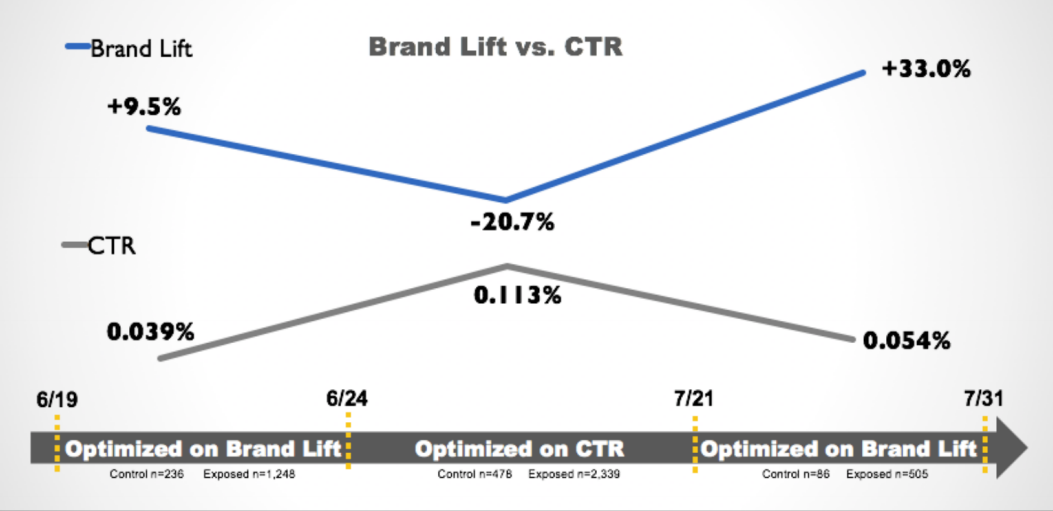Only Brands Can Reverse Digital Marketing Disengagement
by Sonja Kroll on 7th Jan 2016 in News

Many articles have been written accusing publishers of causing the rise of ad blockers due to our ‘complacent, gluttonous, and user-hostile’ approach, resulting in sites flooded with more and more disruptive formats. Brands are the only ones that can reverse digital marketing disengagement, argues Julia Dear, sales director at Haymarket Publishing (pictured below).
It is important to remember that we didn’t start out like this. When media owners were magazine publishers we were fiercely protective of our readers and would never compromise user experience for additional revenue. Editorial departments ruled the roost – because they could. In most cases, a greater percentage of revenue came from copy sales than it did advertising. Our focus on quality content and our ability to nurture a deep and trusted relationship with our audience was paramount. As a result ad/ed ratios were strict, advertising departments had to fight tooth and nail for a right-hand page, and flatplanning was considered an art form. As a result, magazines enjoyed a unique position where the advertising became an integral part of the product and consumers welcomed the adverts as part of the content. This still remains true today, and magazines remain one of the few places where editorial and advertising work in harmony with each other.

However, the key difference was a fair value exchange between consumer, advertiser, and publisher. Ad creative was of the highest quality, readers engaged and responded to those adverts and the publisher was paid fairly as a result. Not just through advertising, but because consumers placed a value on the content creation itself.
A recent study via the IAB states that 18% of adults currently use ad blocking software (up 3% since June 2015). However, 61% said that they would rather not have to pay for the content they consume. As publishers, we feel that there is still an education piece to be done. Quality content is expensive to produce. We have lost a huge chunk of revenue due to the free nature of the web, and if advertising is under threat, then our business models are under threat.
Consumers believe advertising makes businesses like ours rich and they are, therefore, not too bothered to take that profit away. They do not, however, fully comprehend that in many cases it simply supports the high cost base, and that without those revenues the content will disappear. I am a huge admirer of both City AM and Axel Springer, who have both turned off their content to consumers with ad blockers. It allows them to syphon off that audience in particular and communicate with them directly. City AM is opting to simply block the content if the ad blockers remain; however, Axel Springer will let consumers choose between turning the ad blockers off or paying £2.23 per month to view the content. Brave moves from both, and it is great to see publishers trying to take control. Key to their success will be with how they communicate the value exchange needed to the consumer – and I, for one, will be watching closely.
Many commenters to date have suggested that the only way to fix the problem (if it can be fixed at all!) is for publishers to rethink the advertising they carry on their sites and think more carefully about the user experience they offer to consumers. True. However, we need to put that into context as to what that really means. Adblock Plus, for example, allow websites to pay to put themselves onto a ‘white list’ (surely a racket in itself) if they comply with their ‘acceptable ads criteria’. The criteria state that in order to comply, ads should be "preferably text only, with no attention-grabbing images". I am not a creative; however, I am a consumer, and I am pretty sure that text-heavy ads are a hideous user experience?
It is true though that we need to rethink how our sites look and return to the disciplines we have always placed around our print products. However, the only way publishers can achieve this is to go back to the fair value exchange. Consumers are unlikely to start paying for content any time soon. (Just look at what The Sun has done to its paywall recently). So, the onus moves over to clients..
How clients measure success, and perhaps more importantly how they KPI their agencies as a result, is what drives the issue, particularly with the increase of brand advertising moving online. Clients who would previously conduct brand studies to measure uplift or engagement are now focusing on clicks, or ‘likes’, or any other digital measure they have available to them. We have become an industry measuring because we can, as opposed to because (or how), we should.
An agency, business director level, client of mine told me:
“Clients are rightly very focused on delivering and measuring ROI in digital. The problem is that there is often a difference between what they want to see and what they are comfortable investing in. There needs to be more focus on brand measurement and attribution modelling, and a willingness to look at customer journeys as a less of a funnel.”
A classic example of this is in the automotive industry, where success is measured by how many people book a test drive online. When was the last time anyone you knew who has bought a car did that? It is not the right measure, and agencies are concerned, as consumer behaviour is moving even further away from this, and therefore demonstrating improved performance will become increasingly difficult (and probably drive prices down even further). I understand that this is currently the only metric to measure – so clients have two choices. Either make it the right metric and shift consumer behaviour by radically rethinking the test drive process, or focus on how they can improve attribution modelling right through to purchase. I know it is easier said than done, but I can’t help but believe that diverting resource and money in this direction in the short term will create incredible efficiencies in the long run...
A recent study by Collective, with agencies and clients around brand advertising online, revealed that only 12% of respondents said that they use click-through rates as the appropriate performance measure of a brand campaign – yet 62% of respondents stated that only 25% of their campaigns make use of brand response studies from the likes of Nielsen. A real disconnect between what clients and agencies think they should be measuring and what they actually are measuring. Even more worryingly, a recent study by comScore (Natural Born Clickers) found that when publishers were forced to optimise against clicks, there was a direct negative correlation in brand lift, yet as long as publishers are Performance Indexed, and ultimately paid, against these measures, we have no choice but to optimise against them.

Source: Collective
If you add viewability into the mix (no traditional media is 100% viewable), a decline in spend in print and RTB driving a constant pressure on yields and price regardless of quality (as nobody is really measuring quality), publishers have been left with little choice but to try and counter the loss in yield by increasing the volume of ads and the disruptive nature of those ads simply to protect their business models and, therefore, their ability to continue to produce quality content. The market is chasing scale – at the expense of everything…
I could easily blame the advertising agencies for their complicity in this game; however, I empathise with them. In turn, they are beaten up by procurement departments and auditors who are price- not value-focused, and seem to be completely unable to overlay context onto anything. This has always been an issue, but has become increasingly endemic in digital advertising.
So, what is the solution?
Nick Baughan, the chief executive of Maxus, recently wrote about how, as an industry, publishers need to come together collectively to address this issue; and that digital trade bodies need to do more to resolve the problem. I agree, but it is naive to think this is easy to do. The explosion of digital inventory globally means that even if all IAB members took a stand, there will always be someone, somewhere, willing to take the advertising that we might not – whilst these sites and audiences might be of lower quality, as long as we continue to measure the wrong things, we will find it difficult to take that stand.
It is, therefore, the clients who need to re-evaluate. If we want consumers to engage with ads, and stop using ad blockers, then we need to start by measuring success properly, which will allow clients to attribute the right level of value to publishers and premium audiences and, therefore, pay them accordingly. Couple that with a proper focus on what creative is being served, and in what context, and then publishers can confidently reduce the amount of ads on the page and go back to focusing on the user experience, and ensure the advertising is genuinely complimentary and part of the brand. In turn, clients will be rewarded with deeper engagement and higher ROI, and consumers will enjoy the advertising as part of their interaction with the brand.
Steve Brown, chief revenue officer at Rezonence, recently suggested the industry move from a CPM model to a cost-per-human. The idea being that once you have successfully engaged with a consumer with one message, you don’t need to keep up a constant stream of the same messaging. It is an interesting idea that, again, starts with marketers reimagining what success looks like in digital marketing.
The B2B industry is also interesting. Many brands will pay extraordinary amounts of money to reach and engage with a handful of influential advocates within particular industries. They are less focused on scale and buying clicks. Instead, they are looking for deep engagement within a very specifically targeted audience and they, therefore, value that audience accordingly.
The consumer industry should learn from this, and ultimately completely re-think what they are trying to achieve. Although, I fear that it will take a brave client to buck the trend.
Publishers can and will help – it is in our interest to do so. Clients need to seek out the brands that specialise in their markets and have a deeper, more direct, relationship with the targeted audiences that they are trying to reach. They should partner with those brands to better understand consumer behaviour and how they can improve their success criteria to drive performance, both with those brands, but also across their wider marketing plans.
Scale and efficiency has its place, but clients needs to be wary of that in isolation and should use specialists or contextually relevant brands to help them to improve their measurement criteria and, ultimately, improve their ROI across the board.
Ad BlockingAdvertiserAgencyBrandingPublisher








Follow ExchangeWire